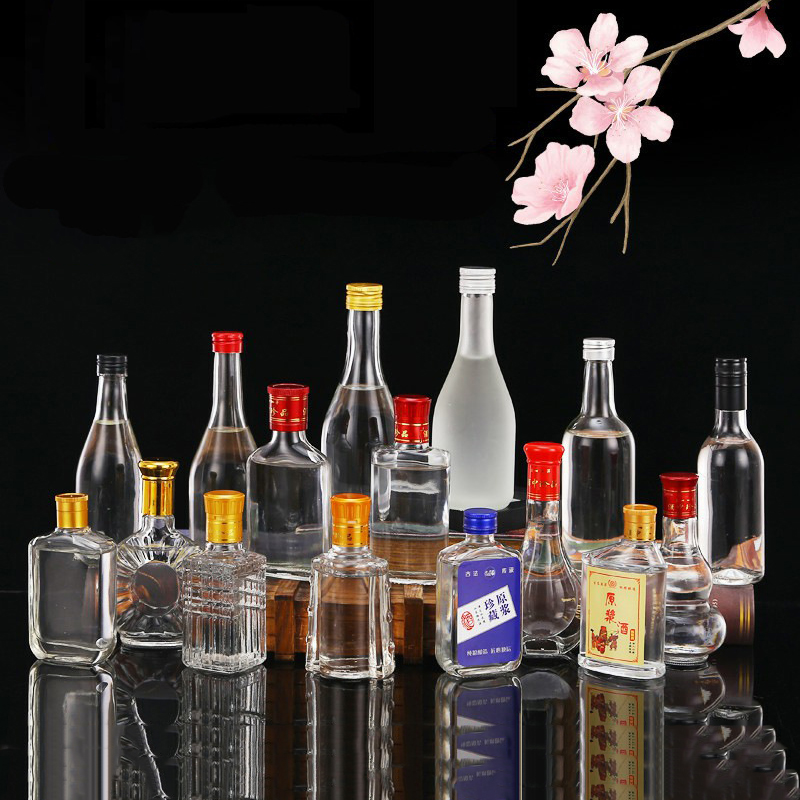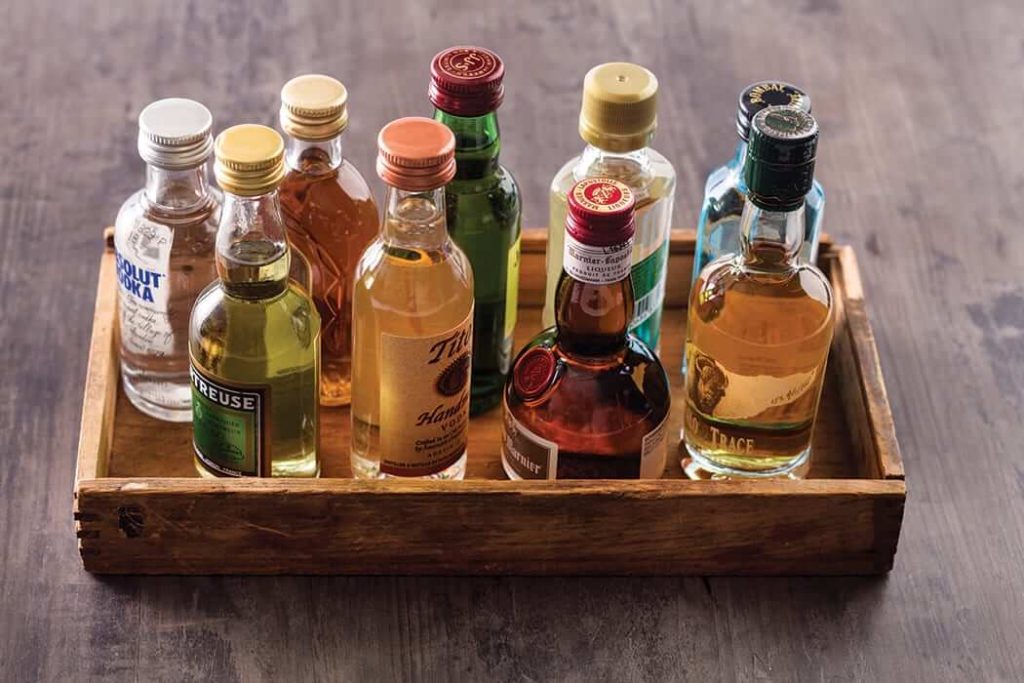Imported glass bottles often encounter product quality problems. You must understand the causes and hazards of these problems. The understanding and difference of common quality defects of glass containers.The glass bottle is fragile, and it is normal to encounter quality problems or damage. Our products are subject to strict quality control. The rate of defective products is less than 1%, and the rate of breakage is less than 3%, which is an excellent level in the industry. If you encounter such problems, we will never shirk and evade in the face of after-sales service. If you encounter similar problems, you can click here to consult us. We have 17 years of export experience, which can help you solve various problems in import and export.
1. Serious defects
Hazards to personal safety, such as mouth cracking and broken glass in the bottle. The customer is not normal. Such as serious deformation and insufficient mouth.
Sticking wire inside the bottle: also called calling: there is a piece of glass wire inside the bottle opposite to each other.
Sticking glass on the outside of the bottle: The sticking glass on the outside of the bottle is usually quite sharp. That is, after the hot end is formed, the bottles are hot, and the two bottles touch each other and stick together. Separate after reaching the cold end.
Sticky glass in the bottle: three defects, namely, punch sticking and prick in the bottle, are produced during hot end molding. Sticky glass in the bottle refers to the glass block falling into and sticking to the inner surface of the bottle when the bottle is at high temperature, but may appear on the bottle body. There is a small sharp glass bulge on the inner wall of the punch stick bottle head. The sharp point in the bottle refers to a sharp projection of the glass on the inner surface of the glass bottle, usually close to the bottom of the bottle.
Cracks on the inner wall of the bottle (internal cracks): cracks of any length and width on the inner surface of the bottle can allow the nails to enter. It has the same shape as the crack line. It is listed as a serious defect because it appears in the bottle body. When some products need to be sterilized at high temperature or filled with aerated materials, cracks can resist dispersion, resulting in broken glass and endangering human safety.
Flaring at the mouth (both inside and outside), burr at the inner edge of the bottle mouth (bottle mouth burr) Flaring at the mouth:
The edge of the inner diameter of the bottle mouth is protruding, and a piece of annular glass belongs to the outer double mouth, which is often accompanied by the increase of the bottle height or the inequality of the bottle mouth. Burrs on the inner edge of the bottle mouth: tiny glass pieces protrude upward at the edge of the inner diameter of the bottle mouth. The two defects affect the sealing of the cap and cause the crushed glass to fall into the bottle.
Thin skin bubble (broken bubble): The bubble on the inside and outside of the bottle or the sealing surface of the bottle mouth will break when the bottle is used normally due to its too soft, and can be scraped through with a fingernail.
Forming die burr: higher burr protruding from the seam line of the bottle.
Insufficient mouth: the top of the bottle mouth is not formed enough.

2. Bottle mouth defect
Flanging of bottle mouth (convex edge) and damage of mouth mold: glass sheet protruding horizontally from the outer edge of bottle mouth. Mouth mold damage: a small grain of glass protrudes from the seam line of the mouth and the sealing surface as well as the fitting with the parison mold, and the vernier caliper is used to measure the defective part, which usually causes the mouth outer diameter to exceed the standard or affects the smoothness of the automatic capping.
Bottle mouth crack (deep crack), bottle mouth sealing surface fine crack (shallow crack): the deep crack is different from the shallow crack, it explodes deeper, and the crack often extends from the inner edge to the outer edge. The shallow crack is the shallow crack on the top edge of the bottle mouth. The crack reflection can be seen only when the light is refracted. Therefore, it is easy to miss the inspection. For products with high sealing requirements, such as beverage bottles, chicken essence bottles, bird’s nest bottles, etc., after filling and capping bottles with shallow holes, the vacuum safety button will be found to be protruding, leaking, and the contents of the bottles will deteriorate after being placed for three or five days.
The depression (notch) in the bottle head is also called “tooth penetration”
The inner diameter of the bottle mouth is too large. Tooth penetration: the glass on the inner wall of the bottle mouth is obviously uneven and deformed. When you touch the inside of the mouth, you obviously feel that it is concave in an isolated shape. The inner diameter of the bottle mouth is too large: the inner diameter of the bottle mouth is larger than the design requirements. Two kinds of defects may cause liquid leakage when they require some internal plugs to be used.
The bulge mouth and the bottle mouth ring are too large: the bulge mouth refers to the outward bulge of the bottle mouth. The bottle mouth ring is too large: the size of the bottle head exceeds the upper limit of the standard. The bulge will also cause the size of the bottle head to exceed the standard. The cause is due to improper operation, while the oversized mouth ring is the cause of the mold.
Bottle mouth crack, bottle mouth defect: bottle mouth convex ring defect, bottle mouth thread defect all collapse due to impact. It just appears in different positions.
Bottle mouth crack (burst) and burst thread: the bottle mouth crack is a crack in the middle of the bottle head, and the thread is a crack between the threads of the screw bottle. The crack on the convex ring of the bottle mouth (pop ball ring) and the crack on the lower edge of the bottle mouth ring (pop chin) under the ball ring are pop ball rings. The jaw burst is a crack under the ball ring and the neck seam or near it.
Roughness of the bottle mouth (rough mouth): the surface of the bottle mouth is rough due to poor finish of the mouth mold. Some products with strict quality requirements are not allowed. Example: Vital milk bottle, beer bottle.
Dish-shaped mouth, uneven mouth, and inclined mouth: the inner edge of the mouth is straight because the mouth edge is not full, like a rabbit lip, often accompanied by insufficient or uneven mouth. Uneven bottle mouth: the gap between the high point and the low point of the bottle mouth surface exceeds the standard requirements. This defect must be detected with a rib feeler gauge. The inclination of the bottle mouth: that is, the parallelism exceeds the standard, and the difference between the large value and the small value from the surface of the bottle mouth to the bottom of the bottle exceeds the standard requirements.
Insufficient thread and too small bottle mouth ring: insufficient molding of bottle mouth thread will cause the outer diameter of thread to be too small, and the bottle mouth will be too small: the size of bottle mouth is less than the lower limit of the standard.

3. Bottleneck defect
Pinch out crack (pincer crack) and bottleneck crack (neck crack): The crack caused by pincer is crescent-shaped and appears at the bottom of meson. Burst neck is a bottleneck crack, usually a horizontal crack.
Bottleneck folding, neck grabbing, bottle shoulder/neck collapse: obvious deep creases on the glass surface, usually at the bottleneck. Grasping the neck means that the neck is deformed, and the collapse of the shoulder and neck means that the neck or the shoulder is insufficiently inflated.
Skew neck and body: Skew neck means that the neck is not straight, which affects the parallelism index. Use a height gauge to measure the bottle height. The difference between the bottom point and the high point can determine the degree of skewed neck. Skew one’s body; The deviation between the center line of the bottle mouth and the middle vertical line of the bottle bottom can be detected by the vertical axis rotary table, and the height ruler cannot be used.

4. Bottle body defect
Explosion body, shallow explosion body: a short and deep crack, caused by the contact between the surface of the formed hot bottle and cold objects such as metal, and the crack reflects light. Shallow explosion; The light crack on the glass surface, which is variable in length, does not penetrate into the glass and does not reflect light.
Bottle body crack line: the opening crack on the outer surface of the bottle body. The hand feels scraped.
Cold mold: the mold temperature is too cold, resulting in rough outer surface of glass, uneven distribution of glass, and concave-convex feeling of hand touch.
Wrinkles: small horizontal wrinkles on the outside of the bottle, whose shape is horizontal and relatively dense.
Crease: slight crease on the glass surface. Usually the crease is nearly horizontal.
Blanking mark: the glass mark formed by blanking on the upper part of the bottle. There may be bubbles around. Its shape is irregular.
Bottle body depression: After the bottle is formed, the bottle wall is squeezed to form obvious or inconspicuous depression. The out-of-roundness of the bottle body exceeds the standard or the diameter of the bottle body is too small at some point.
Small bottle body: the overall diameter of the bottle body is smaller than the lower limit of the standard, which may lead to unqualified capacity or inability to label.
Hot mold crack: usually occurs in the bottle body. It looks like a seagull.
Burst suture: crack usually occurs at the molding seam of the bottle body.
Burst shoulder: vertical crack of bottle shoulder.
Deep crack at the bottle root: deep crack at the bottle root.
Initial mold damage: a sharp glass is concave on the outside of the bottle.
Molding damage: glass protruding from the outside of the bottle.
Exploding letters: there are shallow cracks around the lettering that extend outward.
Explosion location: locate the cracks around.


